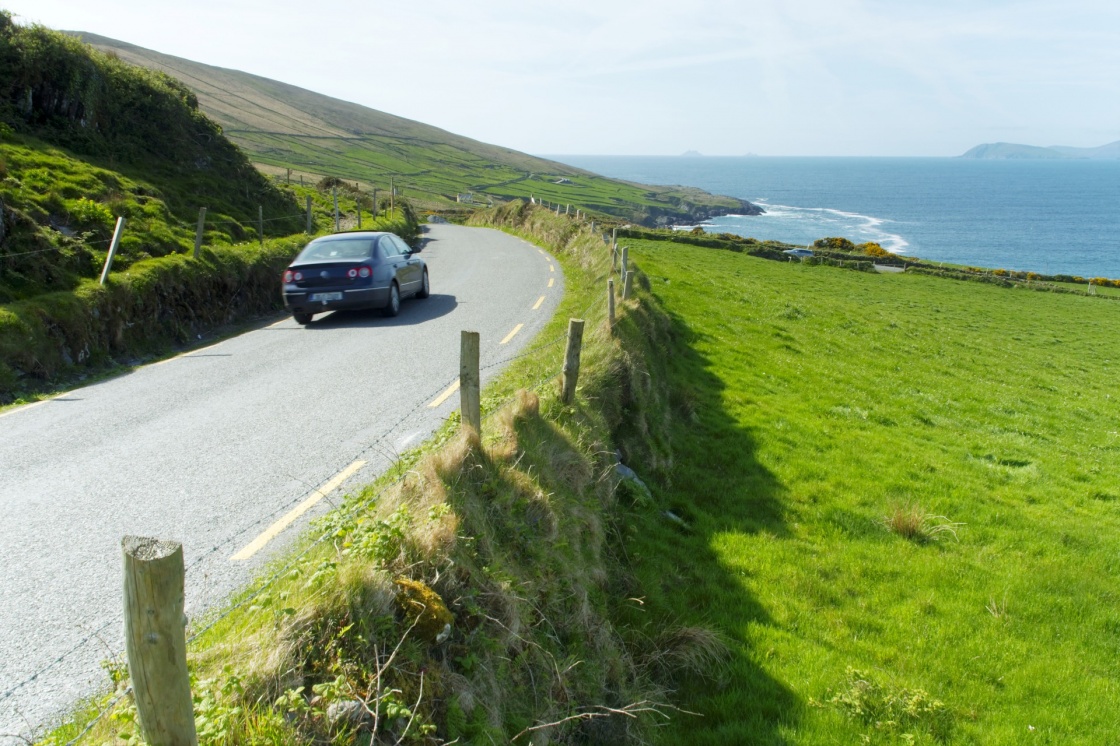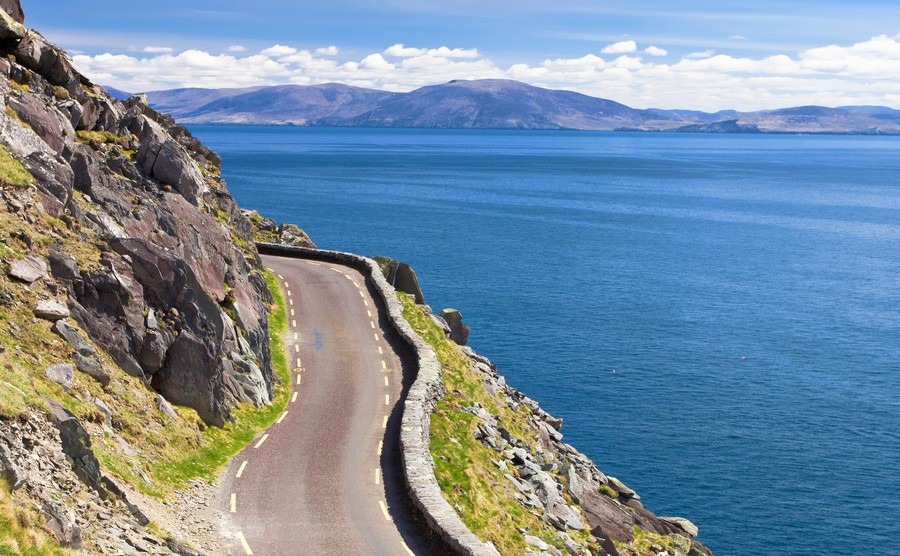Driving in Ireland offers a unique and thrilling experience for both locals and tourists alike. The country’s picturesque landscapes, charming villages, and historic landmarks make it a must-visit destination for road enthusiasts. However, understanding Ireland's driving rules and practices is crucial to ensure a safe and enjoyable journey. If you're planning a trip to Ireland, knowing which side of the road to drive on and other essential driving tips is essential.
Ireland has a rich history of road travel, and its driving culture reflects the country’s distinct character. Whether you're exploring the rugged cliffs of the Wild Atlantic Way or cruising through the rolling hills of County Cork, understanding the rules of the road can significantly enhance your travel experience. This guide will provide you with all the necessary information to confidently navigate Ireland's roads.
From the basics of Ireland driving side to advanced tips for handling local traffic, this article aims to equip you with the knowledge you need. So, buckle up and let's dive into everything you need to know about driving in Ireland!
Read also:Discover The Beauty Of Wichita Kansas Botanical Gardens A Natural Haven
Table of Contents
- Which Side Do You Drive On in Ireland?
- Understanding Irish Driving Laws
- Do You Need an International Driving Permit in Ireland?
- Car Rental in Ireland: Tips and Recommendations
- Navigating Irish Roads
- Safety Tips for Driving in Ireland
- Driving Routes for Tourists
- How Weather Affects Driving in Ireland
- Local Driving Etiquette
- Conclusion
Which Side Do You Drive On in Ireland?
One of the most frequently asked questions about driving in Ireland is, "Which side of the road do you drive on?" In Ireland, drivers are required to drive on the left-hand side of the road. This rule applies to all public roads across the country, including highways, rural roads, and city streets. If you're accustomed to driving on the right-hand side, as is common in many parts of the world, this may take some getting used to.
Why Does Ireland Drive on the Left?
The tradition of driving on the left dates back centuries. Historically, it was more practical for horse riders and carriage drivers to mount and dismount from the left side, especially when wearing a sword on the right hip. Over time, this practice evolved into a standard rule of the road. While many countries have switched to right-hand driving, Ireland has retained its left-hand tradition.
It's important to note that while driving on the left might seem unusual at first, it becomes second nature with practice. Familiarizing yourself with this rule before your trip will help you adjust more easily once you're behind the wheel in Ireland.
Understanding Irish Driving Laws
Driving in Ireland requires adherence to specific laws and regulations designed to ensure road safety. Familiarizing yourself with these laws is essential for a smooth and legal driving experience. Below are some key points to consider:
- Speed limits vary depending on the type of road. Urban areas typically have a speed limit of 50 km/h, while highways may allow speeds up to 120 km/h.
- Seat belts are mandatory for all passengers, including those in the back seat.
- Using a mobile phone while driving is strictly prohibited unless it's a hands-free device.
- Drink-driving laws are strictly enforced, with a legal blood alcohol limit of 50 mg per 100 ml of blood.
Enforcement of Traffic Laws
The Garda Síochána, Ireland's national police force, is responsible for enforcing traffic laws. Officers regularly conduct speed checks and sobriety tests to ensure compliance. Penalties for breaking traffic laws can include fines, license suspension, or even imprisonment in severe cases.
For more detailed information, you can refer to the Road Safety Authority (RSA), which provides comprehensive resources on Irish driving laws and regulations.
Read also:45 Modern Sounds Discover The Evolution Of Contemporary Audio Experiences
Do You Need an International Driving Permit in Ireland?
Travelers often wonder if they need an International Driving Permit (IDP) to drive in Ireland. The good news is that visitors from many countries, including the United States, Canada, and most of Europe, can drive in Ireland with their valid national driver's license. However, an IDP can be useful as a backup, especially if your license is not in English.
Requirements for Foreign Drivers
Foreign drivers should carry their original driver's license along with any translations or IDPs, if applicable. It's also advisable to check with your car rental company for their specific requirements, as some may request additional documentation.
For long-term visitors or expats, it may be necessary to exchange your foreign license for an Irish one after a certain period of residency. The National Driver Licence Service (NDLS) provides information on this process.
Car Rental in Ireland: Tips and Recommendations
Renting a car is one of the best ways to explore Ireland, offering flexibility and access to remote areas. However, choosing the right car rental company and vehicle can make a significant difference in your experience. Here are some tips to help you make an informed decision:
- Book your rental car in advance to secure the best rates and availability.
- Consider renting a manual transmission vehicle, as they are more common in Ireland and often cheaper to rent.
- Opt for a smaller car if you plan to drive on narrow rural roads, which are common in many parts of the country.
- Check the rental agreement carefully for details on insurance, mileage limits, and additional fees.
Popular Car Rental Companies
Some of the most reputable car rental companies in Ireland include Hertz, Avis, and Europcar. These companies offer a wide range of vehicles and competitive pricing. Additionally, many airports and major cities have rental counters, making it convenient to pick up your car upon arrival.
Navigating Irish Roads
Ireland's road network is extensive, with a mix of modern highways and winding country lanes. Understanding the different types of roads you may encounter is key to a safe and enjoyable journey.
Rural Roads
Rural roads in Ireland are often narrow and may have limited visibility. It's important to drive cautiously and be prepared to pull over to allow other vehicles to pass. Additionally, be aware of livestock that may be present on or near the road, especially in agricultural areas.
Motorways
Motorways, or M-roads, are the fastest and safest option for long-distance travel. These roads are well-maintained and offer rest stops and fuel stations at regular intervals. However, tolls are common on many motorways, so it's a good idea to carry cash or have a toll pass if required.
Safety Tips for Driving in Ireland
Driving safety should always be a priority, especially when navigating unfamiliar roads. Here are some essential tips to keep in mind:
- Always drive on the left-hand side of the road.
- Use your headlights during the day for better visibility, especially in rural areas.
- Be cautious when approaching roundabouts, as they are common in Ireland and require yielding to traffic coming from the right.
- Observe road signs and speed limits at all times.
Emergency Services
In case of an emergency, dial 112 or 999 to contact the Garda Síochána or other emergency services. It's a good idea to keep a list of emergency contacts in your car, along with a first aid kit and flashlight.
Driving Routes for Tourists
Ireland offers countless scenic driving routes that showcase its natural beauty and cultural heritage. Below are some popular routes to consider:
- The Wild Atlantic Way: A stunning coastal route that stretches over 2,500 kilometers along Ireland's west coast.
- The Ring of Kerry: A circular route through County Kerry, offering breathtaking views of mountains, lakes, and coastline.
- The Causeway Coastal Route: A route along Northern Ireland's coast, featuring iconic landmarks like the Giant's Causeway and Carrick-a-Rede Rope Bridge.
Planning Your Route
Before setting out, plan your route carefully and check for any road closures or construction work. Using a GPS or smartphone navigation app can help you stay on track, but it's also wise to carry a physical map as a backup.
How Weather Affects Driving in Ireland
Ireland's weather is notoriously unpredictable, with rain being a frequent occurrence. Driving in wet conditions requires extra caution, as roads can become slippery and visibility may be reduced. Here are some tips for driving in adverse weather:
- Reduce your speed and increase following distances to allow for longer stopping times.
- Use fog lights if visibility is severely reduced.
- Avoid driving through deep water or flooded areas, as they can damage your vehicle or cause you to lose control.
Seasonal Considerations
Winter driving in Ireland can be challenging due to shorter daylight hours and potential ice on the roads. Ensure your vehicle is equipped with winter tires or chains if necessary, and keep an emergency kit in your car for unexpected situations.
Local Driving Etiquette
Understanding local driving etiquette can help you blend in with Irish drivers and avoid unnecessary stress. Here are some customs to keep in mind:
- Wave to other drivers as a polite gesture, especially in rural areas.
- Be patient and courteous when encountering slow-moving vehicles or livestock on the road.
- Follow the rules of roundabouts and give way to traffic coming from the right.
Building Goodwill
Local drivers often appreciate tourists who make an effort to follow local customs. A friendly wave or a polite nod can go a long way in fostering goodwill and creating a positive driving environment.
Conclusion
Driving in Ireland is a rewarding experience that allows you to explore the country's diverse landscapes and vibrant culture. By understanding the rules of the road, including which side to drive on, and following safety tips and local etiquette, you can ensure a memorable and stress-free journey.
We encourage you to share your experiences and tips in the comments below. If you found this guide helpful, please consider sharing it with fellow travelers or exploring other articles on our site for more travel inspiration. Safe travels and enjoy the road ahead!


